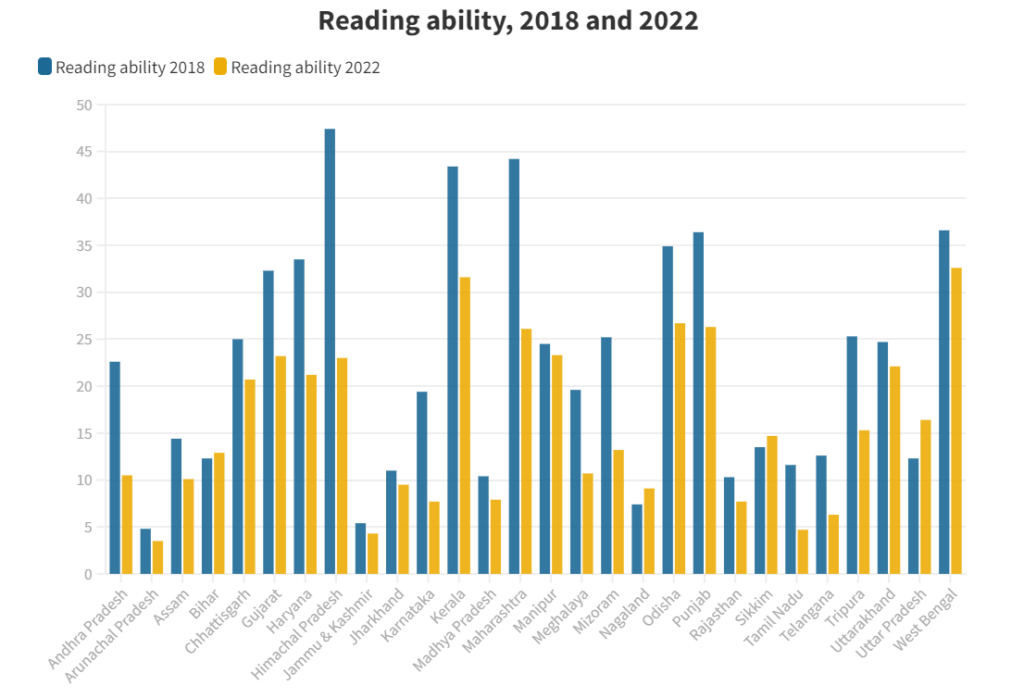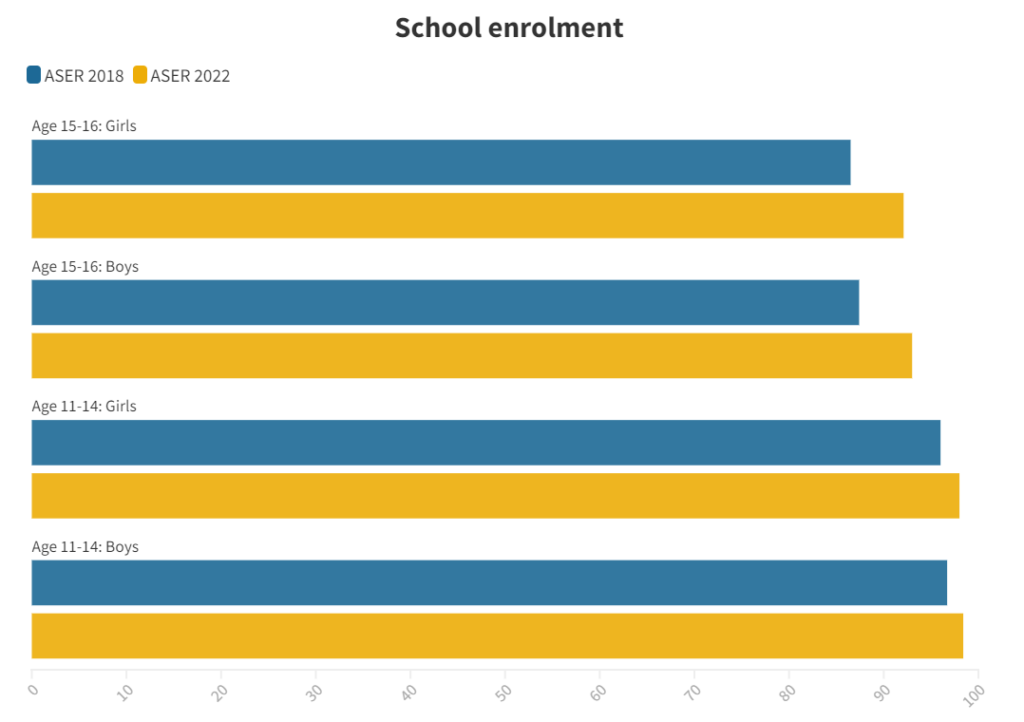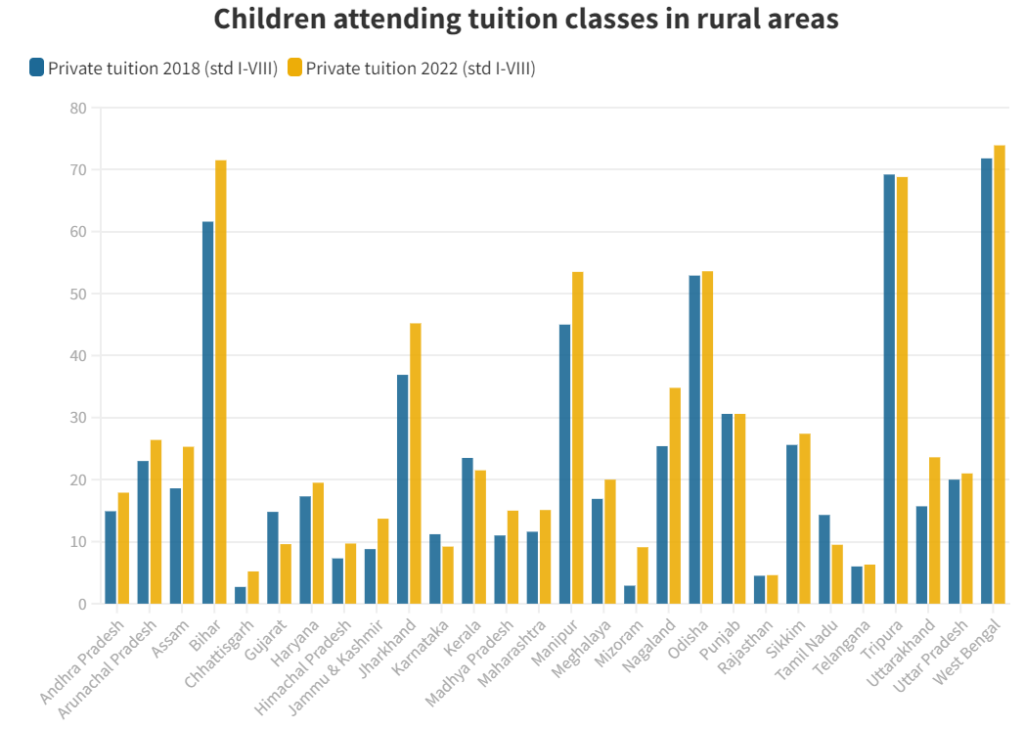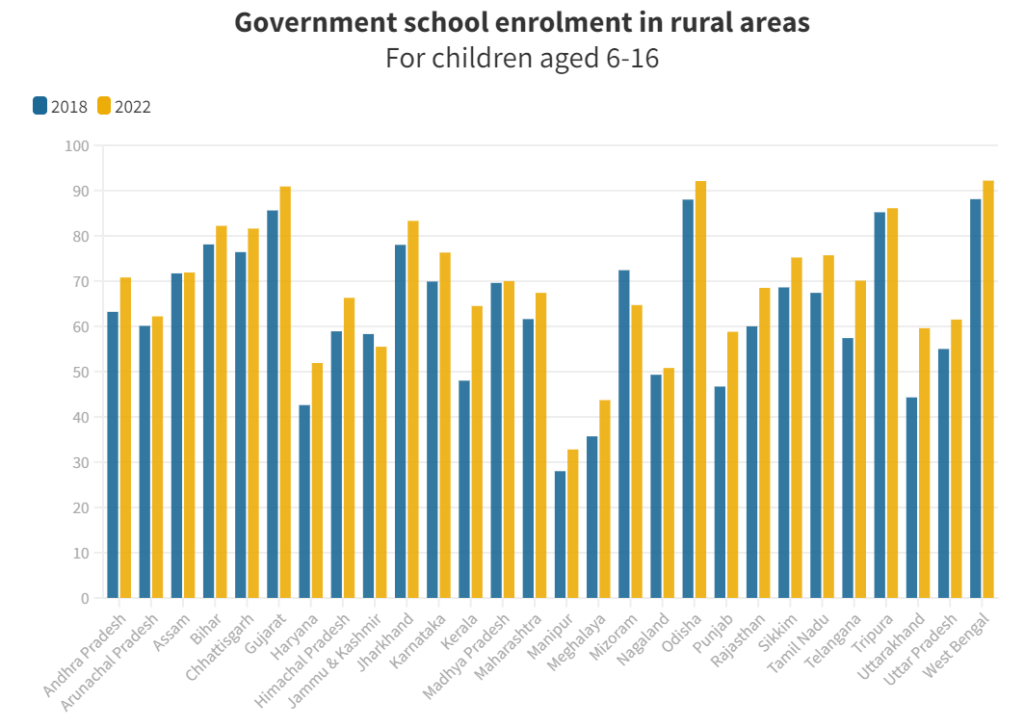The State of Education In India
Education is the cornerstone of any progressive society, and India is no exception. It empowers individuals with the necessary knowledge and skills to lead fulfilling and productive lives, contributes to economic growth and development, and promotes social progress. India, a country with a massive population and diverse culture, has made substantial strides in providing education to its citizens. However, while progress has been made, challenges remain that hinder the country’s ability to provide quality education to all its citizens.
The Current Stats About Education
According to the United Nations Development Programme’s Human Development Index, India’s literacy rate has increased from 52.21% in 1991 to 77.7% in 2019. This is a significant improvement but still falls short of the global average of 86.3%. The situation is worse in rural areas, where the literacy rate is only 71.2%. Moreover, the quality of education is not uniform across the country, with some regions experiencing much better outcomes than others.

India has made significant progress in improving access to education in recent years. According to the UNESCO Institute for Statistics, the net enrollment rate in primary education in India increased from 83% in 2000 to 96% in 2019. Similarly, the net enrollment rate in secondary education increased from 47% in 2000 to 79% in 2019. These statistics indicate that more children in India are attending school than ever before.


mint
However, despite the progress made, challenges remain. According to the Annual Status of Education Report (ASER) 2020, only 16.2% of children in rural areas in the 6-14 age group can read and comprehend a grade-level text in their language. In urban areas, this figure is slightly higher at 32.5%. Additionally, the report highlights a significant gap in learning outcomes between private and government schools, with private schools outperforming government schools in almost all learning indicators.
The report also notes a decline in enrollment in government schools, which may be a cause for concern. Overall, while progress has been made in improving access to education, more needs to be done to improve the quality of education being provided in India.

Challenges In Education
Despite the progress made in recent years, the education system in India faces several challenges. One of the biggest challenges is the lack of access to education. Millions of children in India do not attend school, either because they cannot afford it or because they live in remote areas where schools are scarce. Even for those who do attend school, the quality of education is often poor. Many schools lack basic infrastructure such as proper classrooms, toilets, and drinking water facilities.
Another significant challenge is the high dropout rate. Many children drop out of school, especially girls, due to poverty, child labour, early marriage, and discrimination. The dropout rate is particularly high in rural areas, where girls face more challenges in accessing education than boys.


Importance of Education
Education plays a vital role in developing individuals, societies, and nations. It is a key driver of economic growth and social progress. Education empowers individuals with knowledge and skills to lead productive and fulfilling lives. It is also a powerful tool for reducing poverty, promoting gender equality, and improving health outcomes.
According to the World Bank, each additional year of schooling increases an individual’s earnings by 10%. Moreover, education positively impacts health outcomes, reducing the incidence of infectious diseases and improving maternal and child health. Educated individuals are also more likely to be politically engaged and participate in the democratic process.
Education is also crucial for achieving the Sustainable Development Goals (SDGs) set by the United Nations. The SDGs aim to eradicate poverty, promote economic growth, and achieve sustainable development by 2030. Education is a key enabler of these goals, as it is essential for reducing poverty, promoting economic growth, and empowering individuals and communities.

Solutions To Overcome The Barriers To Education
To overcome the challenges facing the education system in India, innovative solutions are needed. One such solution is the use of technology. Technology can help overcome the barriers to access and quality by providing remote learning opportunities and improving the quality of education. Several initiatives have been launched in recent years to leverage technology in education. For example, the government’s Digital India initiative aims to provide broadband connectivity to all villages and promote the use of technology in education.

Another solution is the adoption of innovative teaching methods. Traditional teaching methods that rely on rote learning are not effective in developing critical thinking and problem-solving skills. Innovative teaching methods such as project-based learning, experiential learning, and peer-to-peer learning can be more effective in developing these skills. Moreover, these methods are more engaging and can help reduce dropout rates.

Public-private partnerships can also play a vital role in improving the education system. The private sector has resources and expertise that can be leveraged to improve the quality of education. Several initiatives have been launched in recent years to promote public-private partnerships in education. For example, the government’s Sarva Shiksha Abhiyan program aims to improve the quality of elementary education through public-private partnerships.

Conclusion
To conclude, education is a fundamental right and a crucial enabler of economic growth and social progress. While India has made substantial strides in providing education to its citizens, there are still many challenges that must be overcome. Innovative solutions, such as the use of technology, innovative teaching methods, and public-private partnerships, can help address these challenges and ensure that all citizens of India have access to quality education.




Source – The Wire
